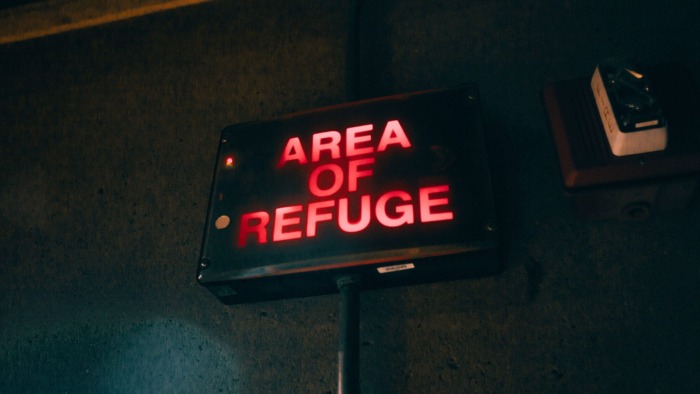
Explora Articles Psychological safety: a precious treasure in turbulent times
April 22, 2020 9 min
Psychological safety: a precious treasure in turbulent times
In adverse moments companies need to make an additional effort to preserve the psychological safety of their people. They have a lot at stake.


In 2012, after the success of the Oxygen Project, in which they studied the characteristics that define a great manager, analysts from Google’s People Analytics team decided to use a similar method to discover the secrets of the most effective teams of the digital giant. The project was dubbed the ‘Aristotle Project’ after Aristotle’s idea that “the whole is greater than the sum of the parts.”
To find the perfect combination of skills, competencies, and profiles that define a high-performing team, Google recruited statisticians, organizational psychologists, sociologists, and engineers.
In two years, they reviewed the research carried out by the academy on this topic, studied the activity of 180 Google teams, conducted more than 200 interviews, and analysed more than 250 different attributes.
They found that the individual characteristics of the people working on the teams did not matter much. What made the difference was how each team worked as a whole.
Specifically, Google’s People Analytics team found that for a team to function effectively its members must understand how their work contributes to the organization achieving its objectives.
They also found that it is important for team members to find a purpose (i.e. a ‘what for’) in their work, whether it is financial safety, support for their families, or a more transcendent mission.
Furthermore, in the most effective teams, people understand what is expected of them, and what are the consequences of their performance.
Also, people on those teams don’t shy away from their responsibilities, and they know they can count on each other to do quality work on time.
The factor that most influences the effectiveness of a team is the so-called ‘psychological safety’: the belief that the team is a safe place to take certain risks.
But still, Google analysts discovered that the factor that most influences the effectiveness of a team is the so-called ‘psychological safety’: the belief that the team is a safe place to take certain risks. The certainty that no one on the team will embarrass or punish anyone for admitting a mistake, asking a question, or proposing a new idea.
Without a doubt, this idea of ‘psychological safety ’is a very suggestive concept. Proof of this is that, after Google’s Aristotle Project, the impact of psychological safety on the effectiveness of teams and organizations has been reaffirmed from different perspectives by different authors.
Daniel Coyle, in his book The Culture Code (2018), argues that the three characteristics that differentiate successful groups are that they a) build safety, b) share their vulnerability, and c) establish a purpose. That means that, according to Coyle, two of the three characteristics that identify a successful group point directly to the idea of ‘psychological safety’.
Regarding how psychological safety is built, Coyle explains that when we work in a group, our amygdala constantly receives signals that indicate to us whether there is a possibility of a safe connection with other members of the group. They are brief, practically unconscious signals that determine our social behaviours more than the explicit content companies usually communicate to encourage their members to propose improvements or report errors without fear of consequences.
(By the way, Coyle clarifies that we should not confuse psychological safety with an undemanding culture, since, in most of the cases he analysed, their cultures are more oriented to solving team problems than to the ‘happiness’ of their members, which implies moments of frank and unsweetened feedback when objectives are not met).
Regarding the idea of ’sharing vulnerabilities’, Coyle argues that when team members share their vulnerabilities, their cohesion increases. He also explains that vulnerability is not shared once relationships of trust are achieved, as it may seem, but it works just the other way around: sharing vulnerability builds trust between team members.
The value of psychologically safe organisational environments, where people take risks and share their vulnerabilities, also underlies Brené Brown’s book Dare to Lead (2018). In this book, based on a definition of a leader as “the person who assumes the responsibility of finding the potential in people and processes, and who dares to develop that potential”, the author concludes that “there is a need for more brave leaders and more cultures of bravery.”
Brown also identifies fear as the most problematic emotion and as the centre of most cultural and workplace conflicts. For this reason, she believes that it is important to work on self-compassion and to be patient with ourselves when leading a team. Likewise, she argues that it is not possible to exercise courageous leadership without resonating with vulnerability, and if we do not listen to others with the same passion with which we want to be listened to.
With shielding behaviours such as blaming, shaming, cynicism, perfectionism, and emotional stoicism, we cannot expect innovative work at a time when we need it more than ever.
The good news for Brown is that bravery is contagious. To do this, however, leaders must cultivate a culture where courageous work and difficult conversations are anticipated, and armour is neither necessary nor rewarded. Among other reasons, the author argues, because, with shielding behaviours such as blaming, shaming, cynicism, perfectionism, and emotional stoicism, we cannot expect innovative work at a time when we need it more than ever.
More recently, Amy C. Edmondson, in her book The Fearless Organization (2019), shows how a high level of ‘psychological safety’ has good consequences for organisations. For example, errors are reported faster, so they can be corrected earlier, “shameless” coordination between groups and departments is made possible, and there is no fear of sharing innovative and disruptive ideas, which is a crucial source of creation of value in a complex and changing world.
On a more practical level, Edmondson presents in this book a ‘framework’ for building fearless organisations. Leaders begin the process by framing the work at hand, setting expectations and standards, and emphasizing what the organisation’s purpose is. The objective of this first phase is to build shared meanings and expectations.
Second, leaders need to invite participation and get people to understand that their point of view is welcome. To do this, leaders will have to demonstrate situational humility, ask questions, listen, and establish structures and processes that facilitate the participation of members of the organisation.
Third, to make the organisation focus on continuous learning, its leaders need to respond productively, expressing appreciation, acknowledging, thanking, de-stigmatizing failures, offering help, and also punishing clear violations of established limits.
We could end this review of the literature on the value of psychological safety for organisations with the latest book by Timothy R. Clark, The 4 Stages of Psychological Safety where, also with a very practical approach, the author explains how when leaders cultivate psychological safety (for which they could follow the framework proposed by Edmondson) teams and organisations evolve through four successive stages. First, people feel included and accepted. Secondly, they feel safe to learn. Third, they feel safe to contribute. Finally, they feel safe enough to challenge the status quo without fear of being marginalized, embarrassed, or punished.
In conclusion, everything indicates that psychological safety is a fundamental pillar of collective effectiveness in a moment when the world changes very quickly. In this context, companies need to turn a larger proportion of their people into “sensors,” capable of quickly detecting opportunities and threats, and into “neurons” of a collective brain capable of imagining innovative responses to unprecedented situations. And to achieve this, people need to dare to speak.
Yet, the reality of many companies is very different. In many organisations, people do not feel psychologically safe. Amy Edmondson refers to it as an “epidemic of silence.”
And why is this?
Edelman’s Trust Barometer, published in January, revealed that 83% of people are worried about losing their jobs.
Fear is the greatest of all problems. Edelman’s Trust Barometer, published in January, revealed that 83% of people are worried about losing their jobs. Among the most mentioned reasons for fear, we must highlight the boom in independent work / ‘gig economy’, a possible economic recession, a lack of training to adapt to the new demands of their employers, competition from foreign companies with lower labour costs, the competition of immigrants willing to work for less, automation of work, and the risk their company decides to transfer its activity to another country.
The fieldwork to prepare Edelman’s report was carried out between October 19 and November 18, 2019, a couple of months before most of us knew about the existence of the COVID-19. Let’s imagine we ask that same question today. What results would we obtain?
The coronavirus crisis may indeed mitigate some of these fears, such as companies deciding to relocate part of their production, or competition from immigrants, which go down in a context in which national borders may continue to be closed for some time. However, the forecasts about the impact of the pandemic on the labour market are devastating. Globally, the ILO predicts that the coronavirus crisis will eliminate 6.7 percent of working hours in the second quarter of 2020, equivalent to 195 million full-time workers, and warns that approximately 1,250 million people work in sectors that are at risk of suffering a particularly “drastic ” impact as a result of this crisis.
This is, in a few words, one of the great challenges the leaders of many companies will have to face in the coming weeks and months: Managing their people’s fears to lose their jobs and, at the same time, cultivating an environment of psychological safety to get from them the new ideas and agility that will allow their organisations to survive in a future that is very difficult to predict.
References
Brown, Brené. (2018). Dare to lead: Brave work. Tough conversations. Whole hearts. Penguin Random House.
Clark, Timothy R. (2020). The 4 Stages of Psychological Safety: Defining the Path to Inclusion and Innovation.
Coyle, Daniel. (2018). The Culture Code: The Secrets of Highly Successful Groups. Bantam Press.
Edmondson, Amy C. (2019). The fearless organization: creating psychological safety in the workplace for learning, innovation, and growth. Wiley & Sons.
Did you like it?
Future for Work Institute operates on an annual subscription model that includes access to our calendar activities and knowledge repository resources, as well as in-company services.
Plan
Curiosity
Recommended for HR teams of between 5 and 20 people.
Plan
Pioneer
Recommended for HR teams of between 15 and 100 people.
Plan
Exploration
Recommended for HR teams of more than 100 people.
Plan
Horizons
For more complex organizations.
Already Registered? Log in here






